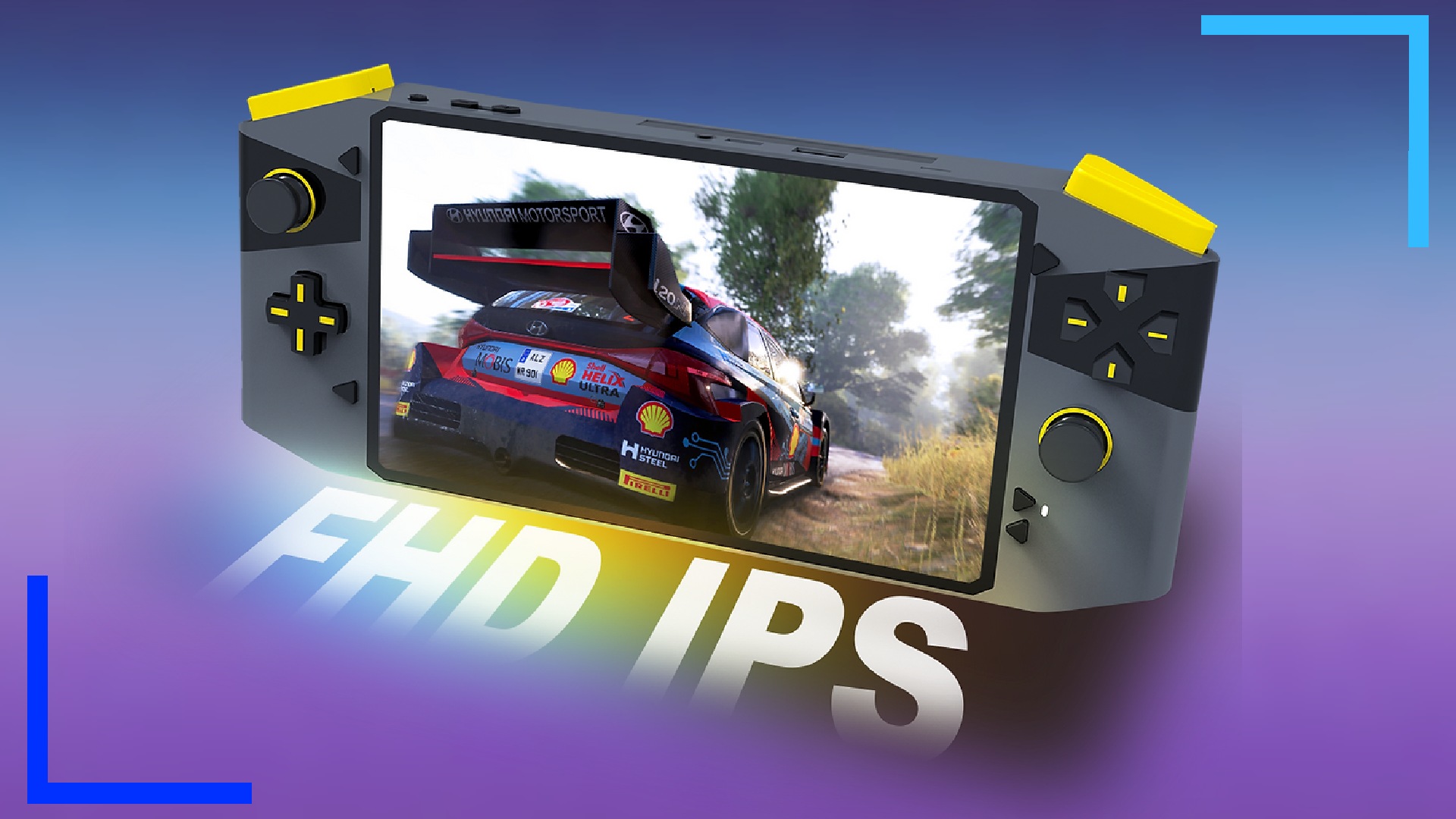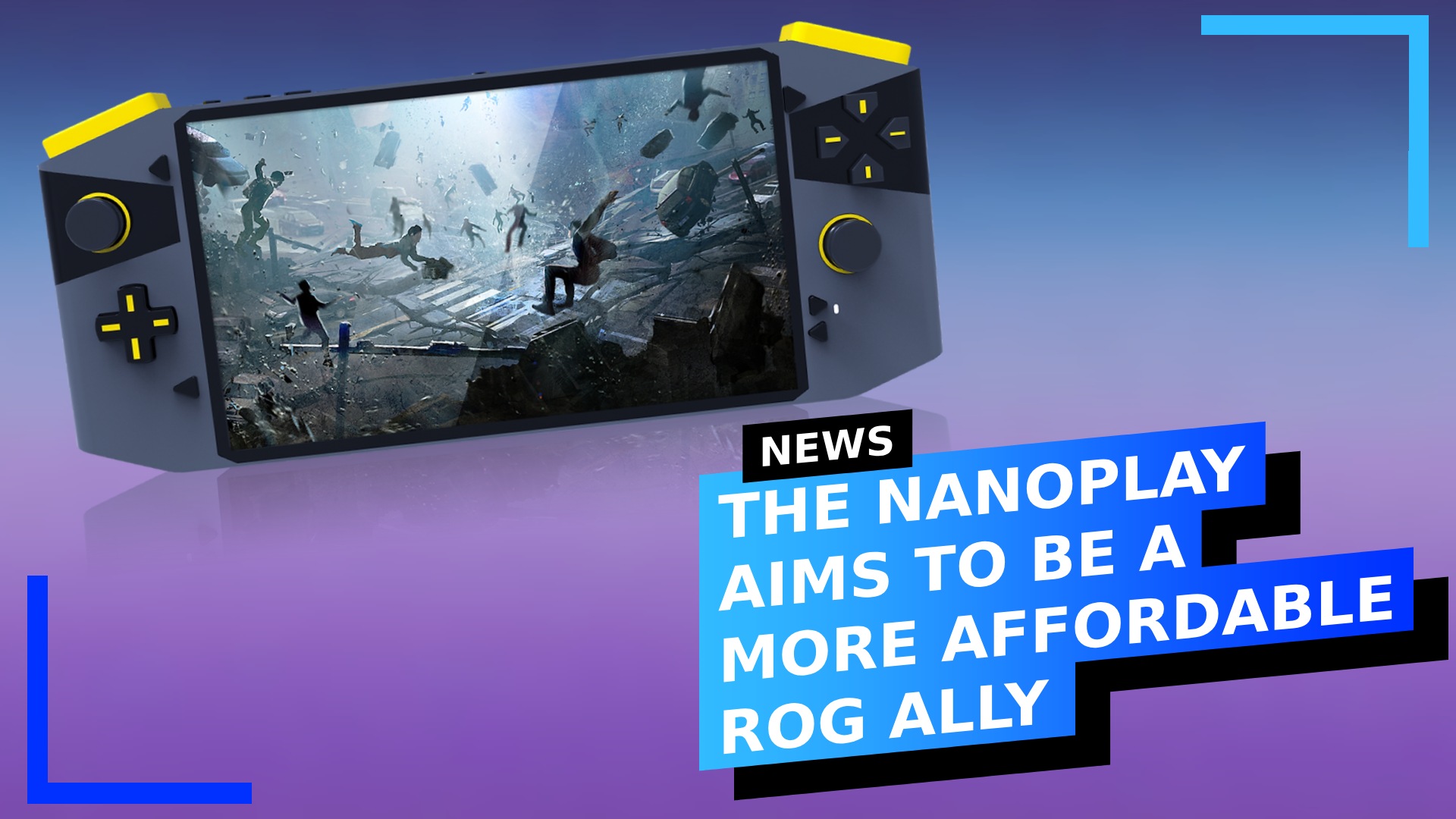The ASUS ROG Ally is a killer device I love, but I’m very open to the idea that $699 is too high of a price for some. If $499 is more in your ballpark, the Nanoplay may be a worthy substitute.
What Is the Nanoplay?
The Nanoplay is the latest in an ever-growing line of Windows handhelds. Think the Steam Deck, ASUS ROG Ally, Lenovo Legion Go, AYANEO, and you’re on the right track.
What caught my attention with the Nanoplay is the fact it’s priced at a respectable $499. That’s still pricey, but if you compare that with the $799 to $1000-plus prices these things usually come in at, it’s closer to the Steam Deck’s $399 price bracket. Unless I’m forgetting something, $499 would make the Nanoplay the cheapest handheld for the specs on offer. Not bad, eh?
Nanoplay Concerns Upfront.

Pictured: A computer-rendered image of the Nanoplay console.
Before I hop into what the Nanoplay is capable of, let me just dial back for some warnings. Firstly, there’s no mention of a company behind the handheld. I’ve tried the usual ways to find out info – WhoIs, checking the source code, etc – but there’s no info about who’s making the device. There’s also no contact email and while the Kickstarter has a name and a location, those aren’t always accurate.
None of this is to say the Nanoplay isn’t legit, but it’s worth keeping in mind these handhelds are easy to fake. My advice? Let’s wait and see before we make any decisions.
Update 11/01/23: I’ve been keeping an eye on this and noticed that the Nanoplay website is no longer operational. It’s possible that it’s down for maintenance or they’re changing hosts, so I don’t want to throw any accusations at anyone. But, it’s still something I’m definitely going to be keeping an eye on.
You can view the original website here via the Wayback Machine, which also shows the site used to be a game retailer prior to it being used to promote the Nanoplay.
Nanoplay Specs.
There’s a direct comparison with the ASUS ROG Ally to be made with the Nanoplay. Both systems share the same processor and the same graphics. That means, unless something goes horribly wrong, we already have a good idea of what the Nanoplay should be capable of.
Where things differ from the ROG Ally is the SSD size options. In the Nanoplay, you can choose between 51GB, 1TB, 2TTB, and 4TB instead of the ROG Ally’s fixed 512GB. What has caught my eye is the Nanoplay uses a 2280 size SSD. Normally handhelds tend to stick with 2230 SSDs are they’re smaller, meaning you need less space inside the device and you don’t need to worry about part of the SSD resting above something that produces heat. That could be a typo, of course, but I’d recommend keeping an eye on that as it’s a frankly bizarre decision design-wise.
On the battery front, the Nanoplay comes in at 48 watt-hours, which is eight watt-hours greater than both the Steam Deck and ROG Ally. That isn’t a massive leap and should amount to around 20 minutes of extra up-time. Still, bigger is always better when it comes to batteries.
What does any of the specs mean? In short, the Nanoplay should be able to play all the latest AAA games in some form. For newer titles like Starfield and Cyberpunk 2077, that’ll mean running them at 30 to 45 frames per second. For games from a few years ago, and especially indie games, 60 frames and above at 1080p should be easily achievable.
Check out the mini-list below to get an idea of where the Nanoplay sits in regards to handheld power.
- AYANEO Kun.
- ASUS ROG Ally/Lenovo Legion Go/Nanoplay.
- Steam Deck.
Alternatively, check out the specs worth knowing below.
| CPU | AMD Z1 Extreme |
| Graphics | RDNA 3 |
| RAM | 16GB of LPDDR5 |
| TDP | 15 watts |
| Storage | 512GB/1TB/2TB/4TB M.2 2280 SSD |
| Resolution | 1920 by 1080 at 165 Hertz (16:10) |
| Battery Capacity | 48 watt-hours |
| Operating System | Windows 11 |
Conclusion.
Should you buy the Nanoplay? Not yet. There are still too many unanswered questions for me to be comfortable recommending this. By the sound of things, the next step is the Kickstarter, so I’d hold off on anything until we’ve actually seen this thing in action fully.
A more useful question is should you keep an eye on it? I’d say yes. One of the biggest barriers to overcome with gaming handhelds is price. At $499, it’s a manageable expense, although I’m not 100 percent sold on the design. It looks like an attempt to mimic the AOKZOE A1 or the TJD 101, only much clunkier. Those triggers and bumpers are massive! I can’t see how they can be comfortable, but then I think the Lenovo Legion Go looks great. Beauty is in the eye of the beholder and all that.

